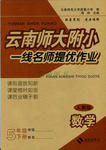题目内容
—How often do you go swimming in summer?
—________. I can’t swim at all.
A. Always B. Never C. Sometimes D. Seldom
练习册系列答案
 云南师大附小一线名师提优作业系列答案
云南师大附小一线名师提优作业系列答案 冲刺100分单元优化练考卷系列答案
冲刺100分单元优化练考卷系列答案
相关题目
题目内容
—How often do you go swimming in summer?
—________. I can’t swim at all.
A. Always B. Never C. Sometimes D. Seldom
 云南师大附小一线名师提优作业系列答案
云南师大附小一线名师提优作业系列答案 冲刺100分单元优化练考卷系列答案
冲刺100分单元优化练考卷系列答案